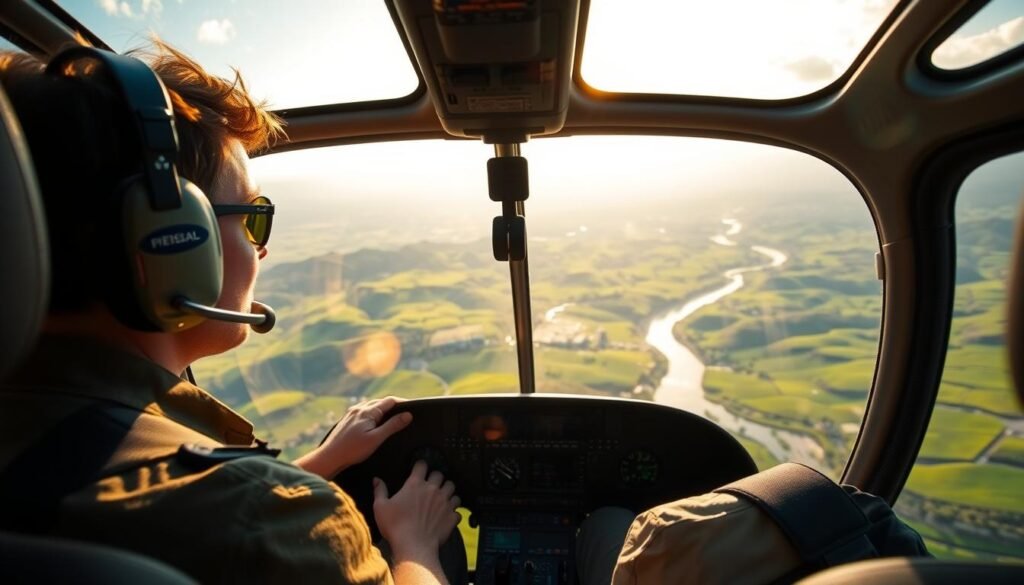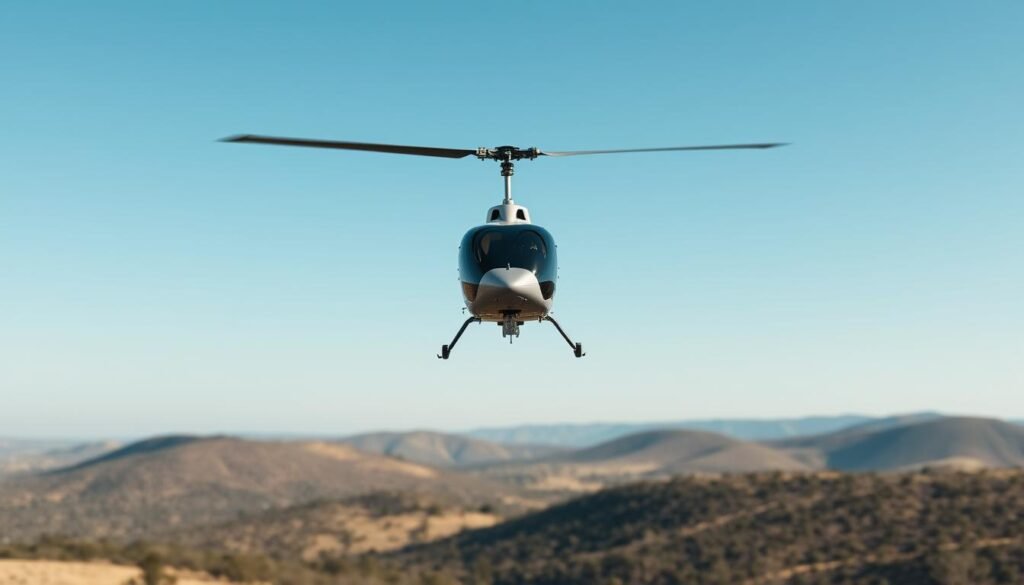Helicopters are versatile and often operate in challenging environments, but like any aircraft, they rely on their engines to stay in the air. This leads many to wonder: What happens if a helicopter’s engine fails? Does it result in an inevitable crash, or are there systems in place to prevent catastrophe? In this article, we’ll explore the truth behind engine failure in helicopters, debunk some common myths, and explain how helicopters can safely land even without engine power.
1. Myth: If a Helicopter Engine Fails, It Will Plummet to the Ground
One of the most common myths about helicopters is that if the engine fails, the aircraft will immediately fall from the sky. This misconception likely stems from the idea that helicopters rely entirely on engine power to stay aloft.
Reality:
Helicopters are equipped with a life-saving emergency maneuver called autorotation. This technique allows the helicopter to glide and land safely, even without engine power. Autorotation works by taking advantage of the airflow through the rotor blades during descent, keeping them turning and generating lift.
2. What Is Autorotation?
Autorotation is a critical feature in helicopter design and plays a vital role in allowing helicopters to land safely during an engine failure.
How Autorotation Works:
- Engine Failure: When the engine fails, the helicopter’s rotor blades are no longer powered by the engine. However, the airflow created by the helicopter’s descent keeps the blades spinning.
- Glide Descent: As the helicopter descends, the pilot controls the rate of descent and forward speed by adjusting the rotor blades’ angle. This process keeps the rotor blades turning, which allows the pilot to maintain control over the helicopter.
- Safe Landing: During the final phase of descent, the pilot increases the rotor blade pitch, slowing the helicopter just before landing, allowing for a smooth and controlled touchdown.
Autorotation ensures that even in the event of a total engine failure, helicopters can glide to a safe landing without crashing.
3. How Pilots Train for Engine Failures
Helicopter pilots are rigorously trained to handle engine failure scenarios and are well-versed in performing autorotation. This training is a key part of a pilot’s certification and ensures that they can execute emergency landings safely.
Pilot Training Includes:
- Simulated Engine Failures: Pilots regularly practice autorotation during training by simulating engine failures at different altitudes and speeds. This ensures they are prepared to respond quickly and effectively in real-world scenarios.
- Autorotation Mastery: Pilots must master the ability to control the helicopter’s descent and landing during autorotation, including managing rotor speed and controlling the helicopter’s direction.
Because pilots are trained to respond to engine failures with autorotation, this emergency technique is reliable and proven in countless real-world situations.
4. Factors That Affect a Safe Autorotation
While autorotation is a powerful emergency technique, there are several factors that can influence the safety and success of an autorotative landing:
Altitude:
The higher the helicopter is flying, the more time the pilot has to execute autorotation and prepare for landing. Pilots at higher altitudes can glide for longer distances, giving them more options for safe landing zones. At lower altitudes, pilots must react more quickly, but autorotation is still effective in controlled descents.
Terrain:
The type of terrain below the helicopter can affect the outcome of an emergency landing. Open fields, flat areas, or roads are ideal for autorotation landings. In contrast, mountainous, forested, or urban areas may limit landing options, making it more challenging to find a safe spot to land.
Rotor Blade Speed:
Maintaining the correct rotor blade speed (RPM) during descent is crucial for a successful autorotation. If the blades spin too slowly, the helicopter could lose lift. Conversely, if they spin too quickly, the helicopter may become difficult to control. Pilots are trained to monitor and adjust rotor speed to ensure a safe landing.
5. Real-World Examples of Autorotation Success
Many real-world incidents have demonstrated the effectiveness of autorotation. Pilots have successfully landed helicopters after engine failures in various conditions, proving that autorotation is a reliable safety feature.
Example: New York City Helicopter Emergency Landing (2018):
In 2018, a sightseeing helicopter in New York City experienced an engine failure while flying over the East River. The pilot successfully executed autorotation, landing the helicopter on the water. While the landing was not without complications, the autorotation technique allowed the pilot to maintain control and avoid a catastrophic crash.
Example: Hawaii Helicopter Engine Failure (2016):
A tour helicopter in Hawaii experienced engine failure over a remote area. Thanks to the pilot’s quick thinking and autorotation skills, the helicopter landed safely in an open field. All passengers and crew were unharmed, highlighting the importance of autorotation training and practice.
6. Myth: Helicopters Can’t Handle Engine Failures
Another misconception is that helicopters are too fragile to handle engine failures and that such events often result in crashes.
Reality:
Helicopters are designed with safety in mind, and autorotation provides a reliable method for dealing with engine failures. When properly maintained and flown by trained pilots, helicopters are equipped to handle emergencies without endangering passengers or crew.
7. Emergency Safety Systems in Modern Helicopters
In addition to autorotation, modern helicopters are equipped with various safety systems to prevent engine failure or mitigate its effects.
Key Safety Systems:
- Dual Engines: Many commercial and military helicopters are equipped with dual engines. If one engine fails, the other can keep the helicopter in flight, allowing the pilot to land safely without resorting to autorotation.
- Crashworthy Fuel Systems: Modern helicopters are designed with fuel systems that reduce the risk of fire or explosion during a hard landing, improving safety in the event of an emergency.
- Advanced Monitoring Systems: Helicopters often come with systems that monitor engine performance and alert the pilot to potential issues before a failure occurs, allowing for preventative maintenance and reducing the risk of engine failure.
8. Conclusion
While the idea of a helicopter engine failure may seem alarming, the truth is that helicopters are designed with emergency systems like autorotation, which allow pilots to land safely even without engine power. With proper pilot training, regular maintenance, and built-in safety features, helicopters can handle engine failures without catastrophic consequences.
By debunking the myth that engine failure leads to inevitable disaster, we can better understand the capabilities of helicopters and the sophisticated systems that keep them safe in the skies. Whether flying over remote landscapes or busy cities, helicopters are equipped to manage emergencies and land safely, ensuring that passengers and crew are protected even in unexpected situations.
Related Articles
- Can Anyone Learn to Fly a Helicopter? Understanding Training and Skills Required
- Why Do Helicopters Make That Distinctive Sound? Helicopter Noise Explained
- Do Helicopters Require More Maintenance Than Airplanes? Separating Fact from Fiction
- How Far Can Helicopters Travel? Dispelling Range Myths
- What Happens if a Helicopter Engine Fails? Debunking Catastrophe Myths
More from This Category
- Are Helicopters More Dangerous Than Planes? A Safety Comparison
- Do Helicopters Have Parachutes? Exploring Emergency Systems
- Can Helicopters Fly Upside Down? The Truth Behind Aerobatic Stunts
- Do Helicopters Need a Runway? Myth vs. Reality
- How Much Does It Really Cost to Fly a Helicopter? Busting the Myths
- How High Can Helicopters Fly? Debunking Altitude Myths
- Can Helicopters Fly in Bad Weather? Understanding Helicopter Capabilities
- Do Helicopters Really Hover Forever? Separating Fact from Fiction
- How Safe Are Helicopters? Debunking Common Misconceptions
- Top 10 Myths About Helicopter Safety: What You Need to Know



